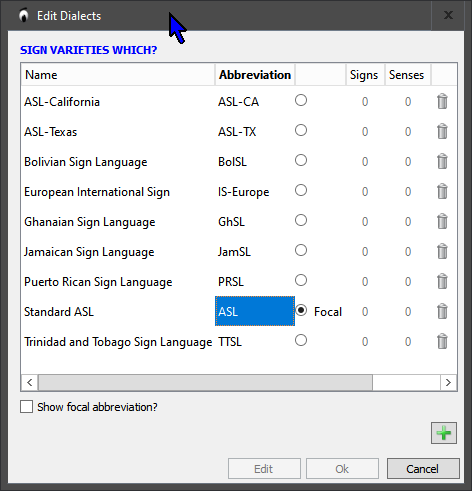You can use SooSL to compare two or more sign languages. For example, maybe you want a dictionary that includes several sign languages in Europe, or sign languages in the ASL family. This type of dictionary is called a comparative dictionary.
How do you do this? You list each sign language as a separate dialect. If you want to have both different languages and different dialects for each language, you just include both the sign language name and dialect name in the name of the "dialect". So, for example, you might have "dialects" for ASL-TX, ASL-MN, ASL-CA as well as other closely-related languages like LSQ (langue des signes québécoise), JamSL (Jamaican Sign Language), and BolSL (Bolivian Sign Language).
If you do this, then the "sign language" for the whole dictionary project will be really a group of sign languages, such as "Sign languages in Europe" or "ASL Language Family".
For example, here's how you might set up dialects to compare several languages that are similar to ASL.

These different languages will then show up in the dialect column of the gloss list. You will also be able to find signs by language.
Created with the Personal Edition of HelpNDoc: Easily create EBooks